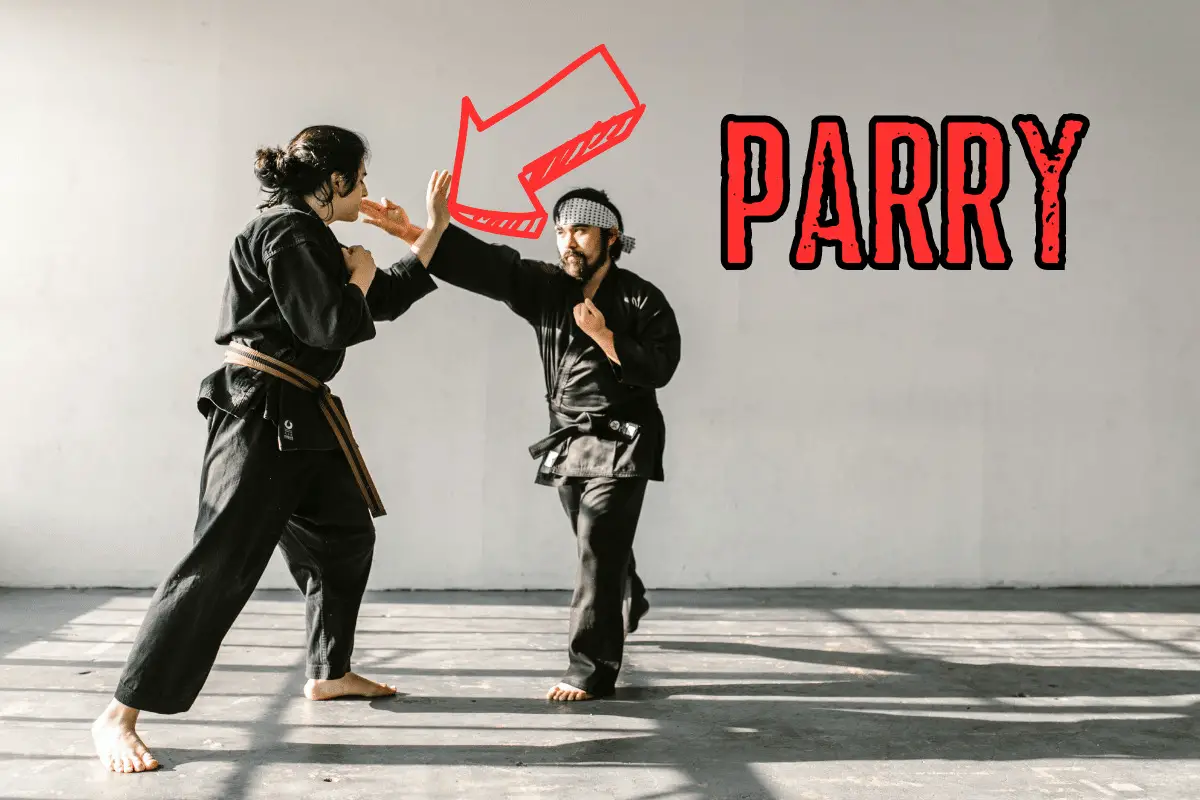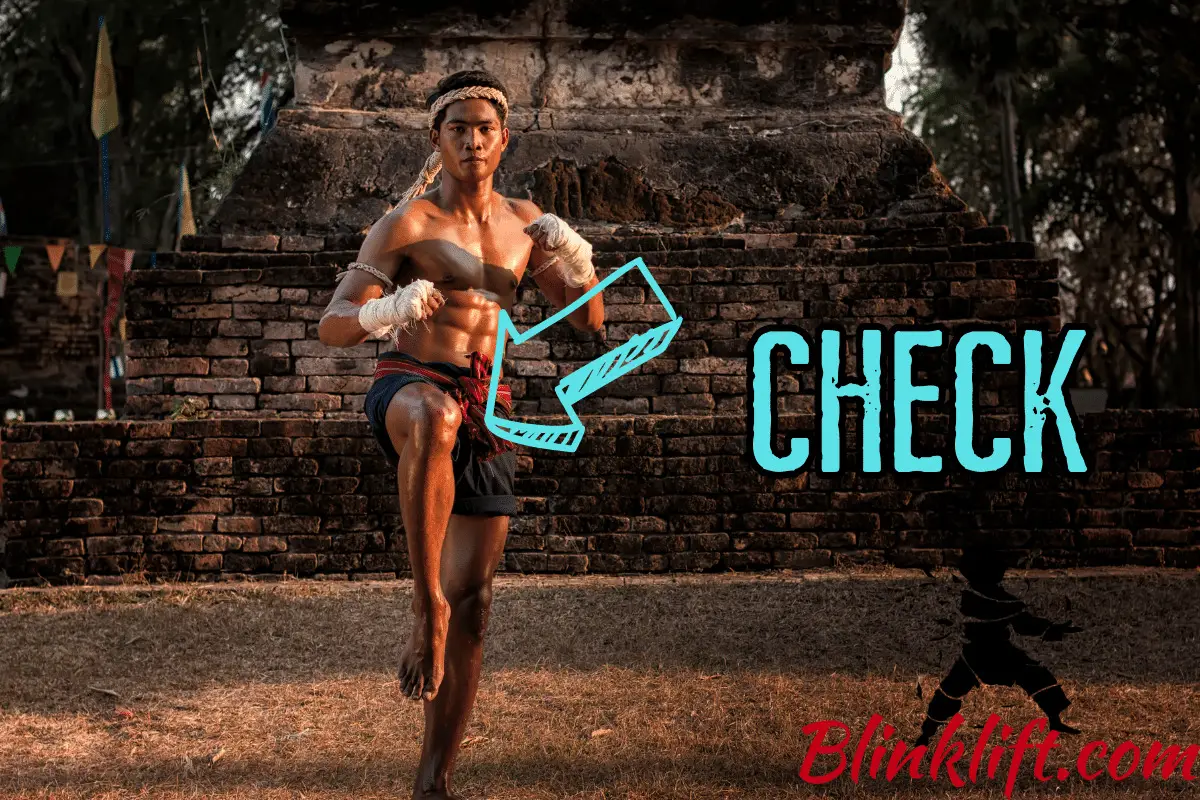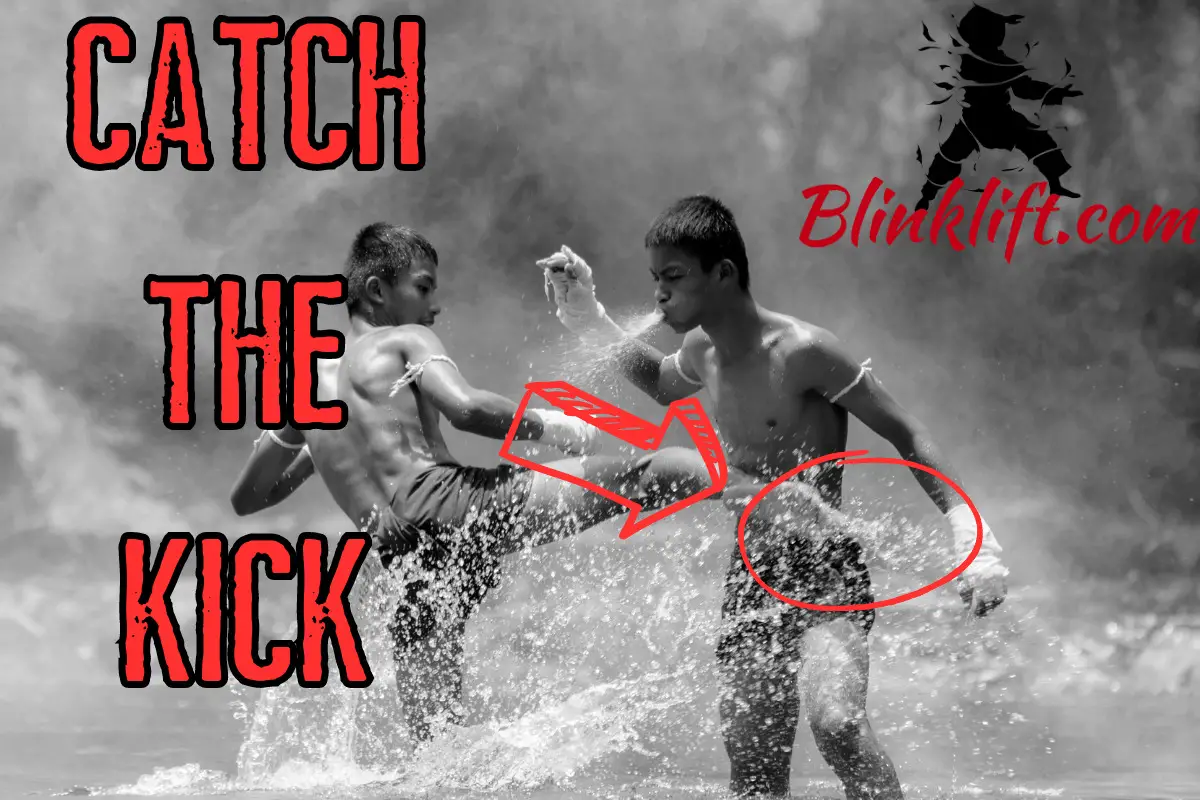Defending yourself in Muay Thai is as important as knowing to attack properly. You can know everything about elbows, knees, punches, and kicks but be a lousy, amateur fighter because you don’t know any defensive moves.
This is why I’ve decided to write this article. What this article will do is give you a brief overview of some of the best defensive moves that exist in Muay Thai. These will skyrocket your fighting skills by (1) giving you opportunities to evade punches and damage and (2) allowing you more openings for counters and attacks.
That’s the reality of Muay Thai, aka The Art of Eight Limbs. If you can evade a strike of any kind, you’ll have an opening to attack. Your opponent is most vulnerable when he’s attacking. So sometimes, the best offense is proper defense. Of course, as the famous quote goes, the opposite is true!
I think that’s enough introduction. You now understand that having a solid defense in Muay Thai will help you win more fights, prevent injuries, and even attack more often. So without further ado, let’s dive into the first, least-used, defensive move on this list.
#1 – Muay Thai Guard (Basic Defense)
The first, least-used, defensive move in Muay Thai is your guard. I know what you might be thinking right now, how is the guard the least-used move? Let me tell you something that I’ve realized from seeing so many fighters in my career.
Not many fighters have good stances and guards. Many of them neglect defense, so they focus on throwing the perfect Hook and Uppercut. However, they fail to pay attention to one of the most basic and obvious defensive moves, the guard.
The fundamental defensive stance in Muay Thai involves keeping your hands up to protect your head and chin while your elbows protect your body. This guard position allows you to block or deflect incoming strikes effectively.
Let’s say your opponent throws a Cross at you. If you have your guard up, you’ll be able to block the punch. But fail to have your guard up and you will get hit in the face. But it doesn’t end there. When your opponent throws a Cross, their entire right side is open, assuming they kept their left hand as a guard.
Therefore, manage to block the Cross and you can counter with either a mean left Hook or a fierce Overhand Punch. Either will be a solid choice! This is why ensuring your guard is perfect—is critical.
If you want to learn everything about perfecting your fighting stance, follow this link.
#2 – Teep (Front Kick)
The second defensive move, which can also be considered an offensive move, is the Teep. You most likely have seen it somewhere if you do Muay Thai. It’s one of these techniques that you simply must know to consider yourself a Muay Thai trainee. It’s also called the Front Kick, which you might be more familiar with.
So how can a kick be a defensive move?
The Teep (Front Kick) is a versatile defensive move that involves using your front leg to push away your opponent. It creates distance and keeps your opponent at bay, making it harder for them to close the gap and attack. The Front Kick will also off-balance your opponent, allowing you the upper hand.
I wrote a complete guide to throwing the perfect Teep, which you can read by following this link.
The Teep is a must-learn move. If you desire to amp up your defensive game quickly, this is the move you should have your eyes on. Make sure to start slowly and increase your execution speed when you feel comfortable with its basics.
#3 – Parry
The 3rd move we’ll review is the parry. It’s one of the more popular ones, but it’s often improperly used. If you understand one basic concept that we’ll review in this section, you’ll be able to start using the parry immediately and experience results.
A parry involves using your hands to redirect your opponent’s incoming strikes away from their target. By parrying correctly, you can disrupt your opponent’s attacks and set up counters. When you parry, you want to push the opponent’s punching arm down to counter effectively.
The key point here (this is where many Muay Thai fighters go wrong) is to redirect the opponent’s punching arm down. If you can redirect it downward, you’ll be able to create an opening for a counter.
Let’s say your opponent throws a Cross, which is with his right hand. You want to block the Cross by parrying with your left hand. If you use your right hand, your entire right side will be vulnerable to a Hook or an Overhand Punch.
The same applies to the Jab. When your opponent throws a Jab, assuming it’s with his left hand, you want to parry with your right hand. Your opponent is likely to go for the 1-2. So if you block with your left hand, your entire left side will be open for his upcoming Cross.
Keep that in mind when parrying.

#4 – Clinching
On #4, we have the infamous Clinch. In Muay Thai, it’s one of the most common defense positions you can get into. Of course, if you use it correctly, you can use it to cause more damage than if you were to be outside the Clinch! That’s definitely exciting.
Clinching is a significant aspect of Muay Thai, and it serves both offensive and defensive purposes. In the Clinch, you control your opponent’s upper body, limiting their striking options while creating opportunities for your own knees and elbows.
I can go into detail about the Clinch for ten articles in a row, so one section in a single article—is definitely not enough. Let’s go over the very basics.
When in the Clinch, you want to control your opponent by using hand grips and creating openings for knees and elbows. When you control your opponent, you can either use strikes to cause damage or go for a takedown. Both options are perfect and will ensure you have the upper hand when in the Clinch.
I wrote a few articles about the Clinch that you definitely want to read if that’s something that interests you. Here they are:
#5 – Head Movement
The next technique we’ll learn will boost your defense game by a lot. However, it’ll also do another thing; it’ll make you a much better fighter that knows how to use angles to create openings to attack. More specifically, we’ll review head movements, which are a critical component of Thai Boxing.
Effective head movement involves swaying, ducking, and bobbing to avoid your opponent’s strikes. This technique is particularly useful for evading punches and Hooks.
The first exercise I encourage you to try is to be really aggressive, either by throwing a 1-2, Lead Kick, Roundhouse Kick, or even Low Kick, and then use your head quickly and sway it diagonally. This will help you surprise the opponent by being much less expected and then evade the opponent’s counters.
What do you think your position in the fight would be if you were to attack vigorously and evade everything the opponent throws at you? That’s precise. You would be at a massive advantage both physically and mentally.
#6 – Check (Leg Kick Defense)
We’ll now review one of the most effective and popular (for a reason) defensive moves in the world of Muay Thai. If you’re interested in not letting your opponent do whatever he wants with his kicks, this block is one of the best moves you can learn. Here’s how it goes.
When your opponent throws a leg kick, you can use a Check to block or minimize the impact. By lifting your shin to meet their kick, you can protect your thigh and counter their attack.

This is one of the most basic defensive moves you want to learn. It’ll help you deal with the opponent’s lead kicks to a fantastic degree. Not only that, but it’ll also create openings for attacks.
Do you notice a pattern with the defensive moves we’ve reviewed thus far? All of them, without a single one missing, create openings to attack. So defense might be one of the best offensive techniques you can learn to use properly.
#7 – Bob and Weave
The next defensive technique we’ll review is the Bob and Weave. This is one you won’t see as much in Muay Thai, but it can definitely be effective. So let me present the facts.
The Bob and Weave is much more effective in punching-based martial arts, which is pretty much Boxing. The reason for that is that the Bob and Weave is a movement where you’re slipping the opponent’s punch by lowering your stance (not ducking or squatting) and moving to the side.
In Muay Thai, there’s a very easy counter to that. Do you know what that is? If you didn’t think about the counter yet, it’s kicking. Kicks are going to hit you regardless of where your head is. Of course, kicks to the head. However, let’s take the Low Kick as an example. You can be the best fighter with the Bob and Weave and lose the fight because your opponent threw a Low Kick.
So now that’s the case and use it cautiously.
Practice moving your head and body to avoid punches. Bend your knees slightly and move your upper body in a weaving motion to slip past the opponent’s punches.
#8 – Slip
Next up, we have the Slip. This is also common in Boxing, MMA, and Kickboxing. However, it’s much more applicable to Muay Thai, as you’ll be able to counter your opponent effectively. Instead of Bobbing and Weaving, you’ll counter immediately after you slip the punch to the side.
Similar to the Bob and Weave, slipping involves moving your head and upper body to avoid punches. However, instead of weaving, you move your head from side to side.
This video is one of the best ones I’ve stumbled upon. It shows precisely what you need to learn to become a fantastic user of the Slip. You’ll be able to understand the real basics of this move, and as you know me already, the basics are what I care most about.
So this is the Slip. Start practicing it as soon as possible, as it’s easy to understand and perfect. Good luck!
Learn to perform the slip better by following this link!
#9 – Catching the Kick
When you see someone catching the opponent’s kicks in Muay Thai, you understand that they’re not joking around. This is an advanced technique, which you want to start learning as soon as you feel comfortable with your defensive game. While it’s not as difficult to get through, it’ll take some practice.
Remember, everything we have learned thus far takes practice to learn. While one fighter might learn it in a day, another will learn it in a week.
With proper timing and technique, you can catch your opponent’s kicks. This momentarily neutralizes their attack and gives you an opportunity to counter. When the opponent throws a kick, preferably to your ribs, you wrap it with your arm and catch it between your arm and armpit. You want to make sure it’s as tight as it gets.
If you’re catching the kick and it’s not as tight as possible, the opponent will be able to keep swinging his leg and create distance. This distance will then give him time to recalibrate, which you don’t want. Instead, you want to catch it as tightly as possible and counter.

The one counter I encourage you to learn first is to swing his leg through and follow through with a Side Kick. Try it out. See whether it works for you. If it feels comfortable, begin learning more and more counters, such as sweeping the opponent and even pushing him backward and following up with an Overhand Punch.
Final Words
And these are some of the best defensive moves Muay Thai has to offer. Remember, Rome was not built in a day, and it was also not built in two. You have to remain as dedicated to your goals as possible and you’ll eventually reach them.
I have yet to hear about someone who has dedicated their time to learning a skill or achieving a goal and hadn’t reached it. If you really want to learn proper defense in Muay Thai, you will make it. All it takes is dedication and consistency.
Here are other articles you’d benefit from reading:

